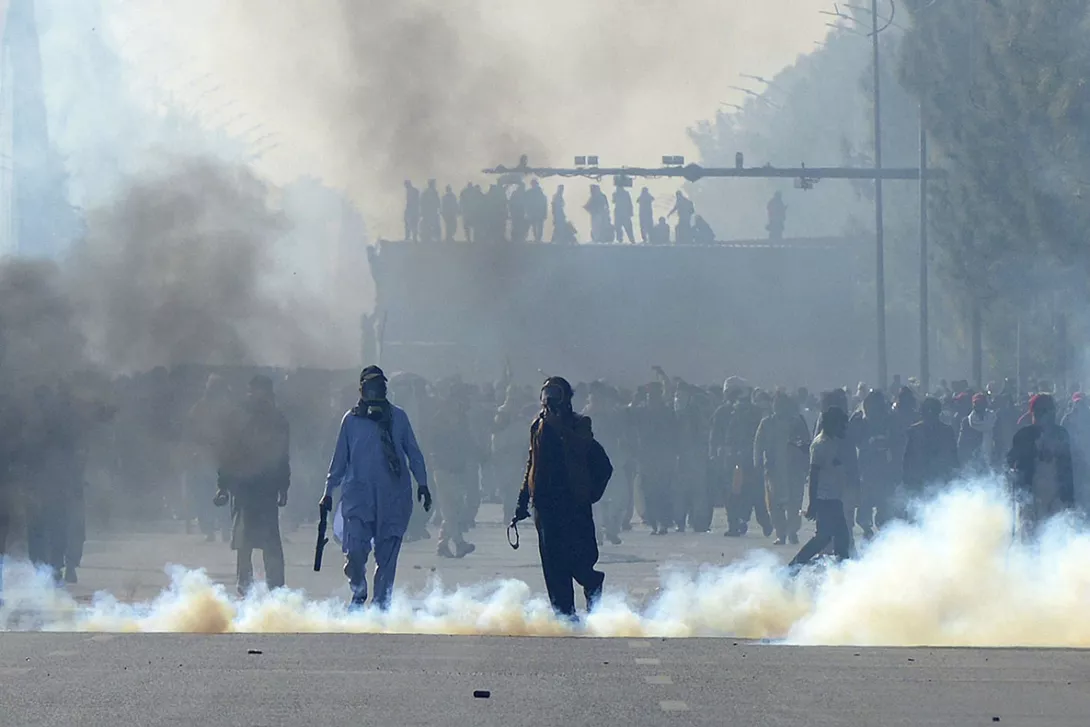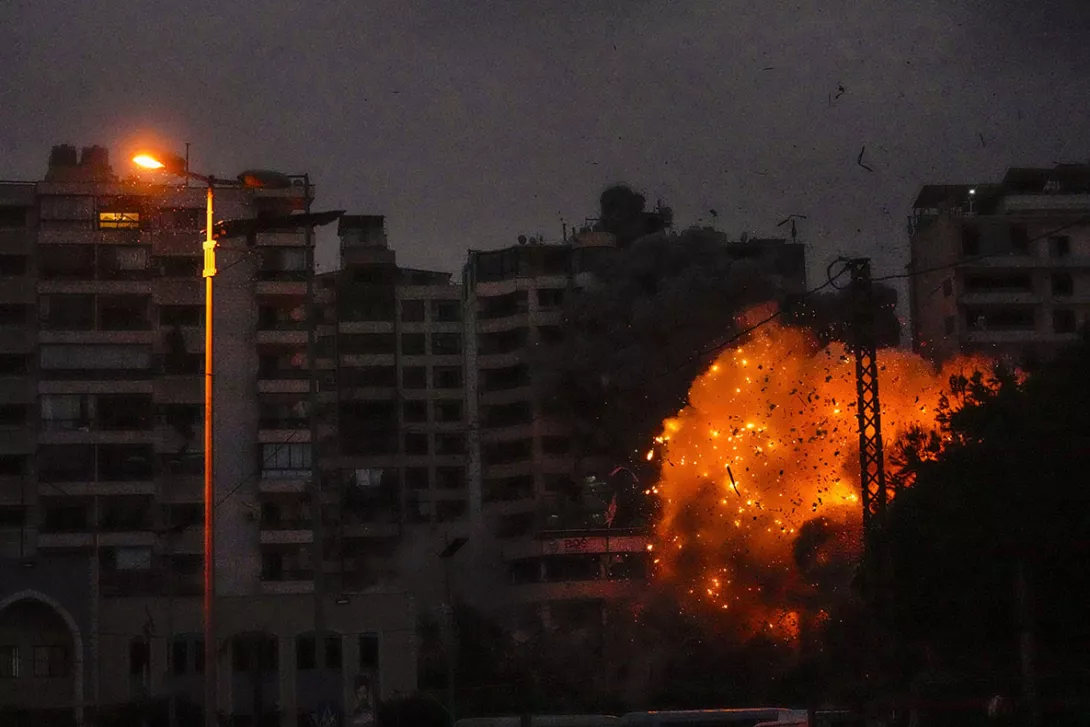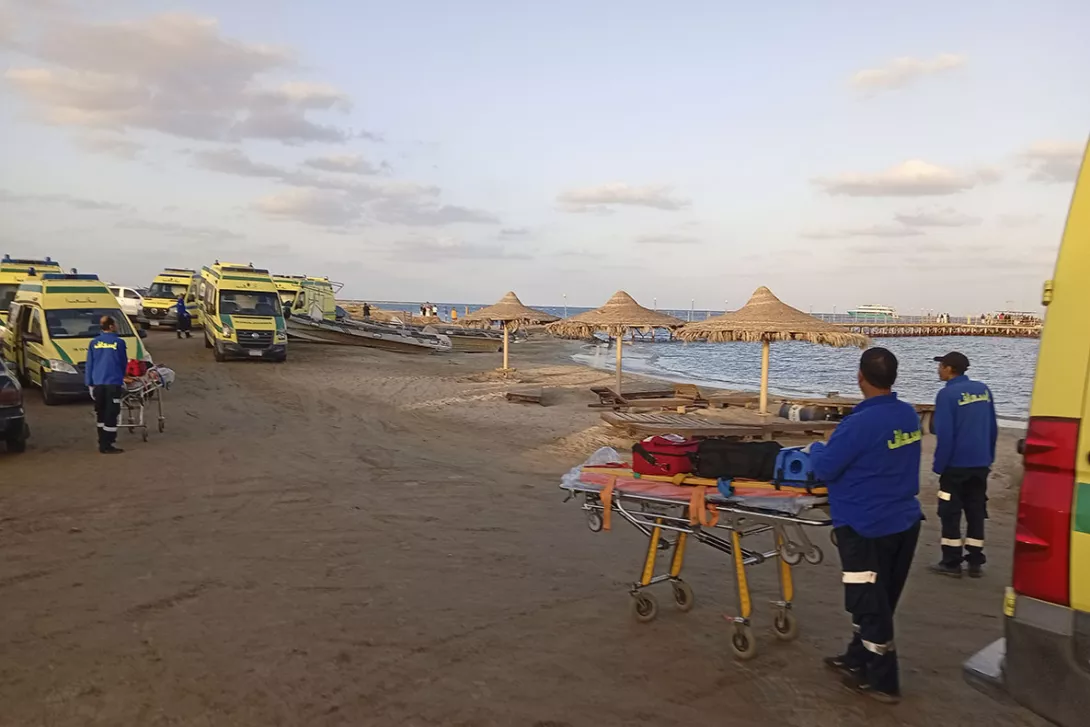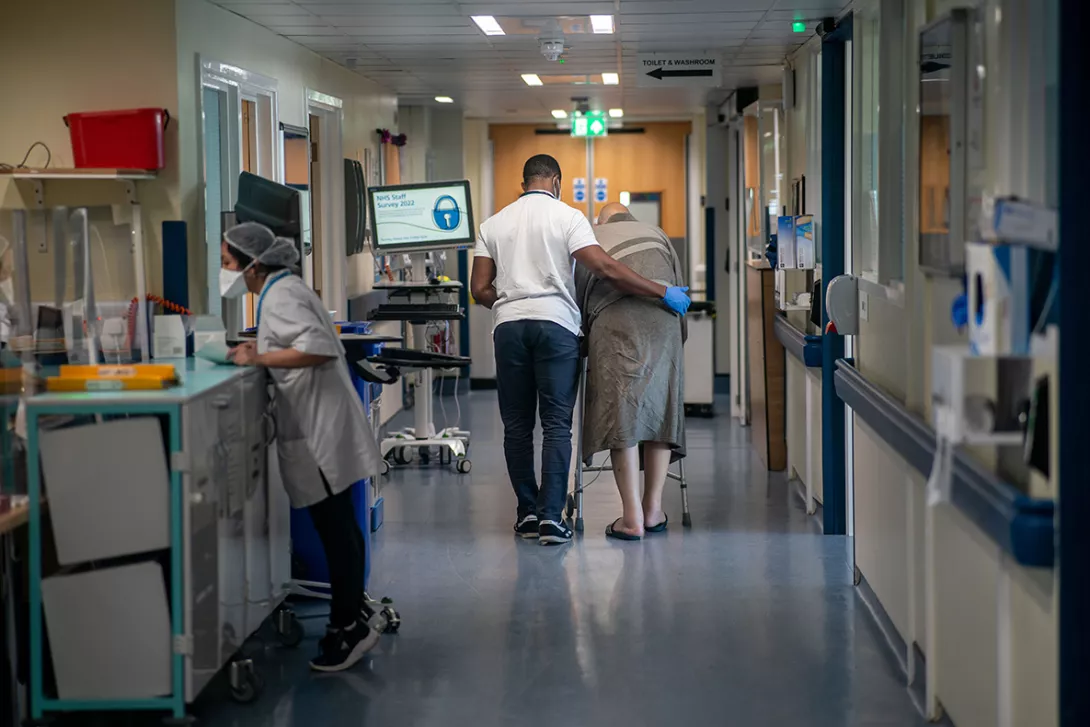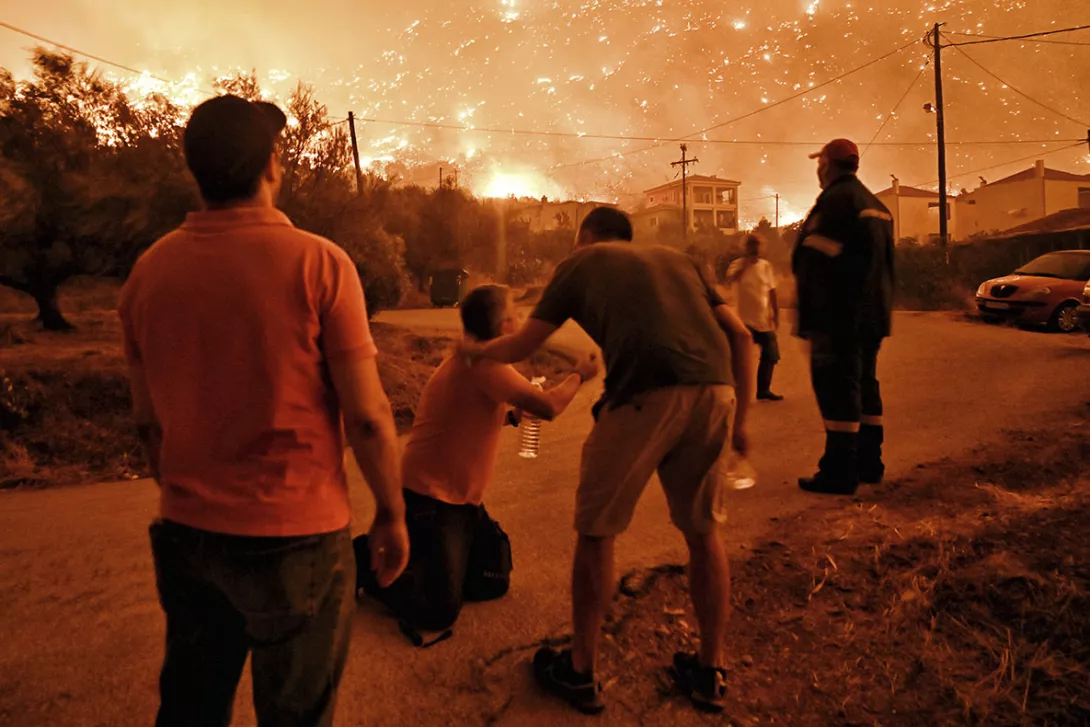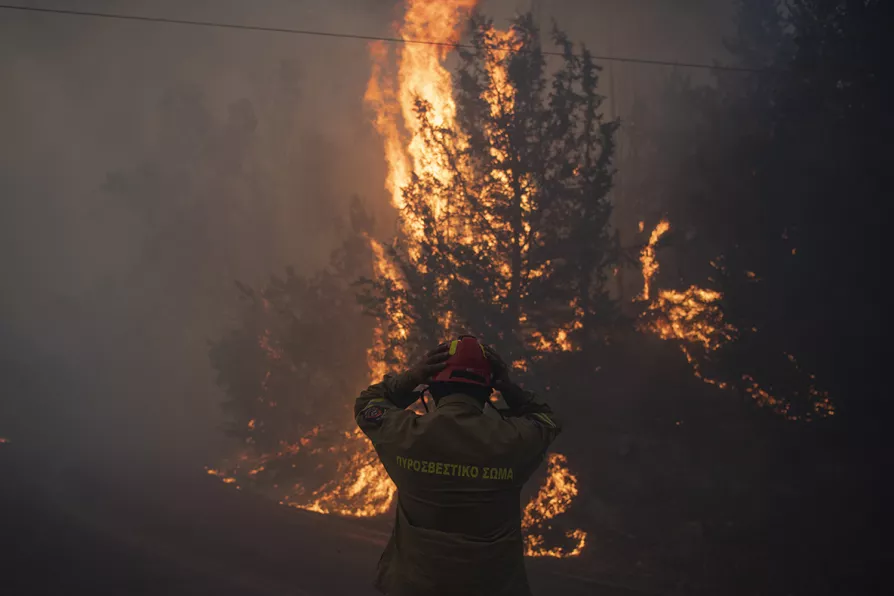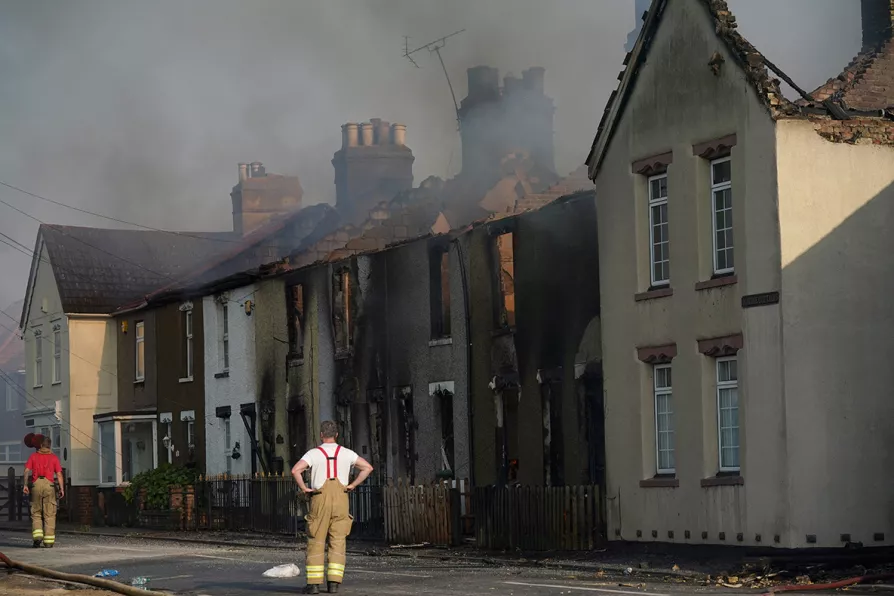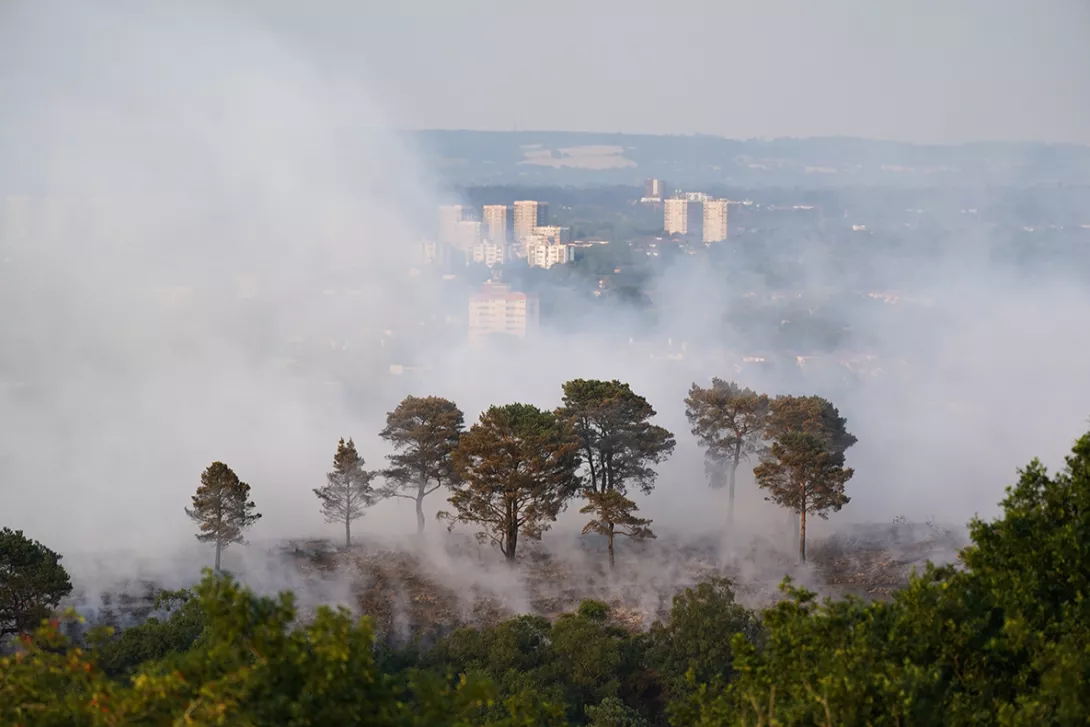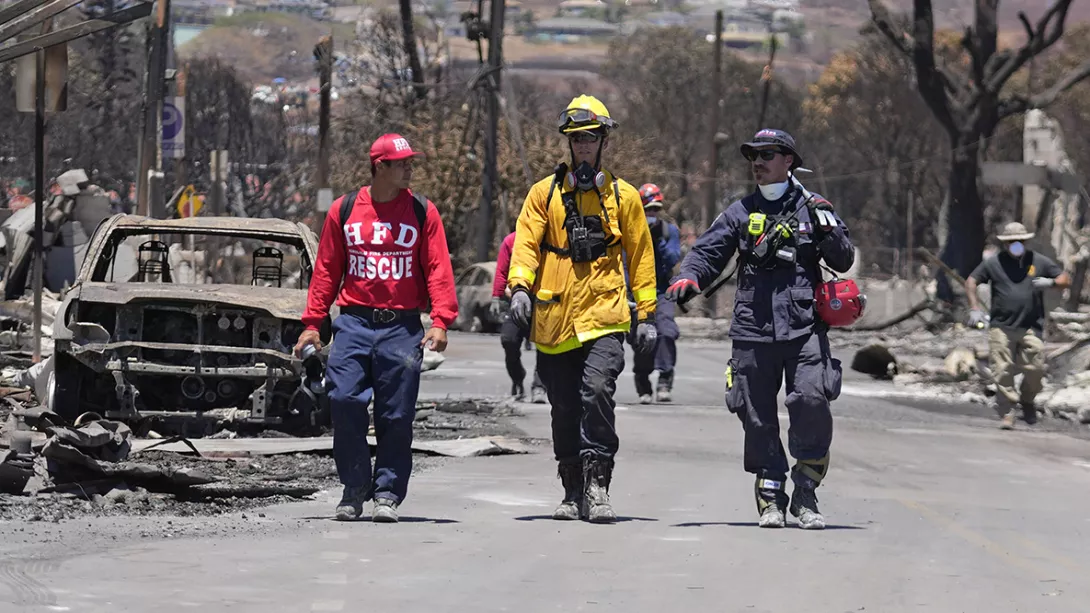
THE death toll from a wildfire that razed a historic Maui town in Hawaii reached 93 today, with authorities warning the number of casulaties could rise significantly.
Efforts to find and identify the dead are still in the early stages, Maui Police Chief John Pelletier said, as crews with cadaver dogs had covered just 3 per cent of the search area over the weekend.
He said that the death toll is likely to grow and “none of us really know the size of it yet.”
Federal emergency workers picked through ash left by the fire that razed the centuries-old town of Lahaina.
Teams marked the ruins of homes with a bright orange X to record an initial search and HR when they found human remains.
Mr Pelletier said identifying the dead was extremely challenging because “we pick up the remains and they fall apart ... when we find our family and our friends, the remains that we’re finding is through a fire that melted metal.”
Only two people have been identified so far, he said.
At least 2,200 buildings were damaged or destroyed in West Maui, Governor Josh Green said, of which 86 per cent were residential.
At least two other fires have been burning on the island, with no fatalities reported so far, in south Maui’s Kihei area and the mountainous, inland communities known as Upcountry.
A fourth fire broke out Friday evening in Kaanapali, a coastal community north of Lahaina, but crews were able to extinguish it, authorities said.
Emergency managers in Maui were searching for places to house people displaced from their homes, with as many as 4,500 people in need of shelter.
Today’s death toll makes it the deadliest natural disaster to hit the United States.
When the wildfire tore through Lahaina, which is a popular tourist destination, many people jumped into the sea to escape the flames.
One resident told the BBC that she was upset some tourists on the island have been carrying on with their holidays as normal.
“The same waters that our people just died in three days ago are the same waters the very next day these visitors – tourists – were swimming in,” she said.
“There is two Hawaiis right now: there is the Hawaii we’re living in and the Hawaii they’re ... visiting.”



